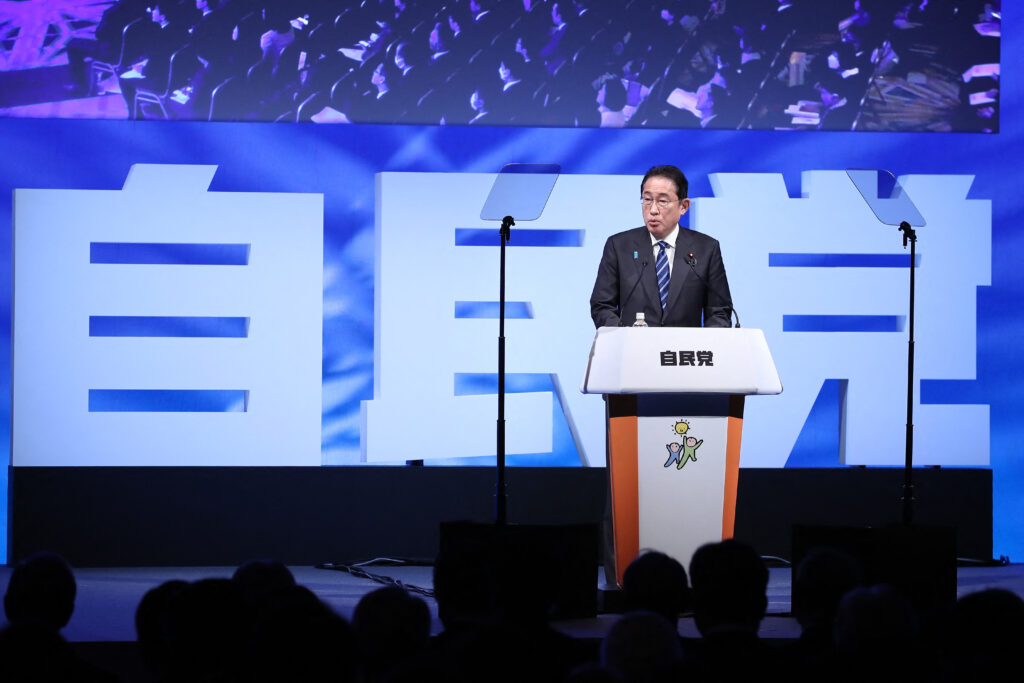
- ARAB NEWS
- 20 Aug 2025

TOKYO: Japan’s ruling Liberal Democratic Party, seeking to restore trust hurt by money scandals, is pinning hope on a boost that may be provided by the upcoming change of top leader.
The LDP will hold a leadership election in September to choose the successor to President KISHIDA Fumio, the country’s prime minister, who said last week that he will step down without seeking re-election.
The party hopes to capitalize on a sense of renewal stemming from the election of a new president. In the past, there were instances in which public support for LDP-led cabinets improved significantly after leadership changes.
Following Kishida’s surprise announcement of resignation, LDP members expressed relief, calling the action a prudent move that will bolster cabinet approval ratings. Past data show that ratings tend rise when a new cabinet is launched.
According to Jiji Press survey data, Kishida’s initial cabinet approval rating was 40.3 points, logged after the previous LDP presidential election in 2021. It was 11.3 percentage points higher than the level recorded by Kishida’s predecessor, SUGA Yoshihide, just before the announcement of his resignation.
Soon after taking office, Kishida dissolved the House of Representatives, the lower chamber of parliament, for a general election in October 2021. Although the LDP was expected to struggle, the party won an absolute stable majority of 261 seats.
Among past cases, KOIZUMI Junichiro, who became prime minister in 2001, stands out for an approval rating surge.
In a party race held after his predecessor, MORI Yoshiro, announced resignation, Koizumi declared that he would “destroy the LDP,” gaining a landslide victory over rivals including former Prime Minister HASHIMOTO Ryutaro.
Koizumi’s trademark succinct slogans sparked a sensation among the public, allowing him to score the initial cabinet approval rating of 72.8 points, up from a rating of 9.6 points at the end of the Mori administration.
Notable cabinet approval rating spikes were also seen during transitions from ABE Shinzo to FUKUDA Yasuo in 2007, from Fukuda to ASO Taro in 2008 and from Abe to Suga in 2020, posting increases of 18.6 points, 15.0 points and 18.5 points, respectively.
The now-defunct Democratic Party of Japan experienced similar improvements while it was in power. It enjoyed a 22.1-point surge during the transition from HATOYAMA Yukio to KAN Naoto in 2010 and a 36.8-point recovery when Kan was succeeded by NODA Yoshihiko in 2011.
But it is to be seen whether the LDP will log a similar increase this time.
The party’s slush fund and other money scandals cast a long shadow, leading many to draw parallels with the situation in 2009, when the party fell from power.
In April this year, the LDP lost all three Lower House by-elections.
“It’s a big mistake to think that the problem of politics and money will be forgotten if we change the face of our party,” a middle-ranking LDP lawmaker said.
The main opposition Constitutional Democratic Party of Japan, for its part, will hold its leadership election Sept. 23. President IZUMI Kenta seeks re-election, while former President EDANO Yukio has decided to run. Some members are trying to put up a third candidate.
In the party, concerns are mounting that public attention will focus on the LDP race, not the CDP’s poll. In addition, public support for the CDP fell from 5.4 percent to 5.0 percent following the previous party race in 2021.
The CDP faces the task of expanding its presence as the biggest opposition force through active policy debates.
JIJI Press